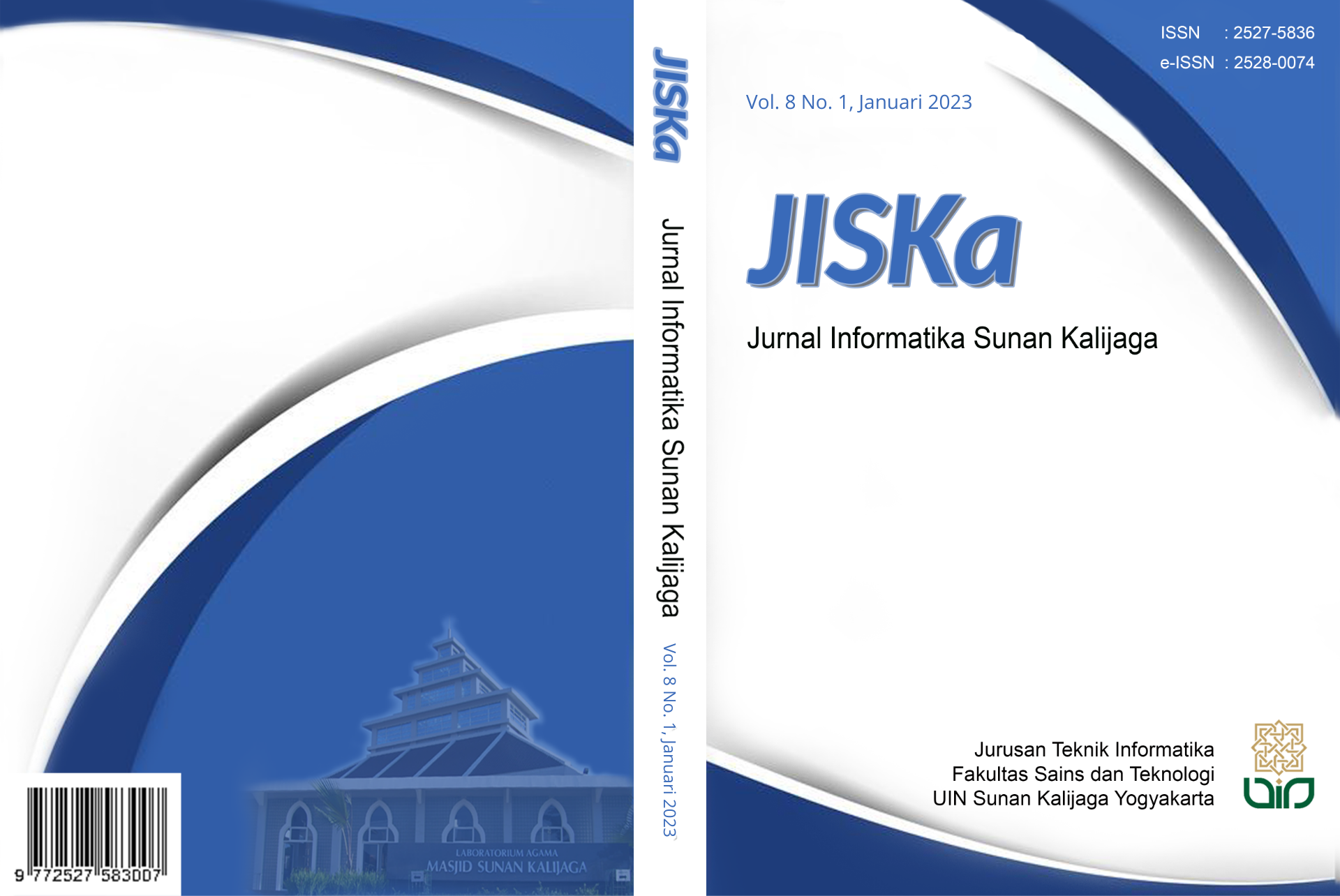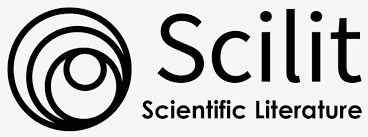Pengelompokan Obyek Wisata Potensial dengan Self Organizing Maps (SOM) dan Sum Additive Weighting (SAW)
DOI:
https://doi.org/10.14421/jiska.2023.8.1.1-9Keywords:
Tourism, Data Mining, Clustering, SOM, SAWAbstract
Probolinggo Regency is an area in East Java that has tourism potential. The condition is seen from the many tourists visiting various attractions in Probolinggo Regency. To increase the number of tourist visits, it is necessary to develop tourism objects. However, not all attractions in Probolinggo Regency can be developed at the same time. This is due to budget limitations for tourism development. Therefore, it is necessary to have a grouping of attractions according to the priority level of development. In this study, researchers utilized Self Organizing Maps (SOM) and Sum Additive Weighing (SAW) methods to group attractions based on their development priority levels. SOM is used to determine groups of tourist objects based on the parameters of the number of domestic tourists, the number of foreign tourists, infrastructure, and the number of attractions. Furthermore, SAW is used to find out which group has the highest priority among other groups based on these parameters. To measure the quality of the resulting group, researchers used the value of the silhouette coefficient. Results from the grouping process resulted in three groups. Group C1 consists of 4 attractions, group C2 consists of 20 attractions, and group C3 consists of 10 attractions. The value of the silhouette coefficient also holds a good value, especially in group 1, which is 0.75006. Furthermore, based on the ranking of groups by the SAW method, the C1 group is the group of tourist attractions with the highest priority for development.
References
Al-Otaibi, R., Jin, N., Wilcox, T., & Flach, P. (2016). Feature Construction and Calibration for Clustering Daily Load Curves from Smart-Meter Data. IEEE Transactions on Industrial Informatics, 12(2), 645–654. https://doi.org/10.1109/TII.2016.2528819
Arifin, J. (2020, October). SDM Pelaku Wisata di Probolinggo Perlu Ditingkatkan. Radar Bromo. https://radarbromo.jawapos.com/daerah/kraksaan/27/10/2020/sdm-pelaku-wisata-di-probolinggo-perlu-ditingkatkan/
Asan, U., & Ercan, S. (2012). An Introduction to Self-Organizing Maps. In Computational Intelligence Systems in Industrial Engineering (pp. 295–315). https://doi.org/10.2991/978-94-91216-77-0_14
Badan Pusat Statistik. (2020). BPS Kabupaten Probolinggo. Badan Pusat Statistik. https://probolinggokab.bps.go.id/
Bi, W., Cai, M., Liu, M., & Li, G. (2016). A Big Data Clustering Algorithm for Mitigating the Risk of Customer Churn. IEEE Transactions on Industrial Informatics, 12(3), 1270–1281. https://doi.org/10.1109/TII.2016.2547584
Hale, R. L. (1981). Cluster analysis in school psychology: An example. Journal of School Psychology, 19(1), 51–56. https://doi.org/10.1016/0022-4405(81)90007-8
Hartatik, H., & Cahya, A. S. D. (2020). Clusterisasi Kerusakan Gempa Bumi di Pulau Jawa Menggunakan SOM. Jurnal Ilmiah Intech : Information Technology Journal of UMUS, 2(02). https://doi.org/10.46772/intech.v2i02.286
Maulida, L. (2018). Penerapan Data Mining dalam Mengelompokkan Kunjungan Wisatawan ke Objek Wisata Unggulan di Prov. DKI Jakarta dengan K-Means. JISKA (Jurnal Informatika Sunan Kalijaga), 2(3), 167. https://doi.org/10.14421/jiska.2018.23-06
Miljkovic, D. (2017). Brief review of self-organizing maps. 2017 40th International Convention on Information and Communication Technology, Electronics and Microelectronics (MIPRO), 1061–1066. https://doi.org/10.23919/MIPRO.2017.7973581
Muin, A. A., Informasi, S., Sain, F., Teknik, D., & Alauddin, U. (2018). Implementasi Self Organizing Maps (SOM) Klasifikasi Penduduk untuk Menentukan Keputusan Pembangunan Daerah Prioritas Miskin (Studi Kasus Kota Makassar). Jurnal INSYPRO (Information System and Processing), 3(2). https://doi.org/10.24252/INSYPRO.V3I2.5888
Satoto, B. D., Muhammad, A., & Khotimah, B. K. (2015). Pengelompokan Tingkat Kesehatan Masyarakat Menggunakan Shelf Organizing Maps Dengan Cluster Validation. Seminar Nasional Aplikasi Teknologi Informasi (SNATI) 2015.
Simamora, R. K., & Sinaga, R. S. (2016). Peran Pemerintah Daerah dalam Pengembangan Pariwisata Alam dan Budaya di Kabupaten Tapanuli Utara. JPPUMA: Jurnal Ilmu Pemerintahan Dan Sosial Politik UMA (Journal of Governance and Political Social UMA), 4(1), 79–96. https://doi.org/10.31289/jppuma.v4i1.895
Song, X., Li, W., Ma, D., Wu, Y., & Ji, D. (2018). An Enhanced Clustering-Based Method for Determining Time-of-Day Breakpoints Through Process Optimization. IEEE Access, 6, 29241–29253. https://doi.org/10.1109/ACCESS.2018.2843564
Umar, R., Fadlil, A., & Az-Zahra, R. R. (2018). Self Organizing Maps (SOM) untuk Pengelompokkan Jurusan di SMK. Khazanah Informatika : Jurnal Ilmu Komputer Dan Informatika, 4(2), 131–137. https://doi.org/10.23917/KHIF.V4I2.7044
Wira, B., Budianto, A. E., & Wiguna, A. S. (2019). Implementasi Metode K-Medoids Clustering untuk Mengetahui Pola Pemilihan Program Studi Mahasiwa Baru Tahun 2018 di Universitas Kanjuruhan Malang. RAINSTEK : Jurnal Terapan Sains & Teknologi, 1(3), 53–68. https://doi.org/10.21067/jtst.v1i3.3046
Downloads
Published
How to Cite
Issue
Section
License
Copyright (c) 2023 Indra Dharma Wijaya, Muhammad Afif Hendrawan, Nurcahya Nania Anabela

This work is licensed under a Creative Commons Attribution-NonCommercial 4.0 International License.
Authors who publish with this journal agree to the following terms as stated in http://creativecommons.org/licenses/by-nc/4.0
a. Authors retain copyright and grant the journal right of first publication with the work simultaneously licensed under a Creative Commons Attribution License that allows others to share the work with an acknowledgement of the work's authorship and initial publication in this journal.
b. Authors are able to enter into separate, additional contractual arrangements for the non-exclusive distribution of the journal's published version of the work (e.g., post it to an institutional repository or publish it in a book), with an acknowledgement of its initial publication in this journal.
c. Authors are permitted and encouraged to post their work online (e.g., in institutional repositories or on their website) prior to and during the submission process, as it can lead to productive exchanges, as well as earlier and greater citation of published work.










